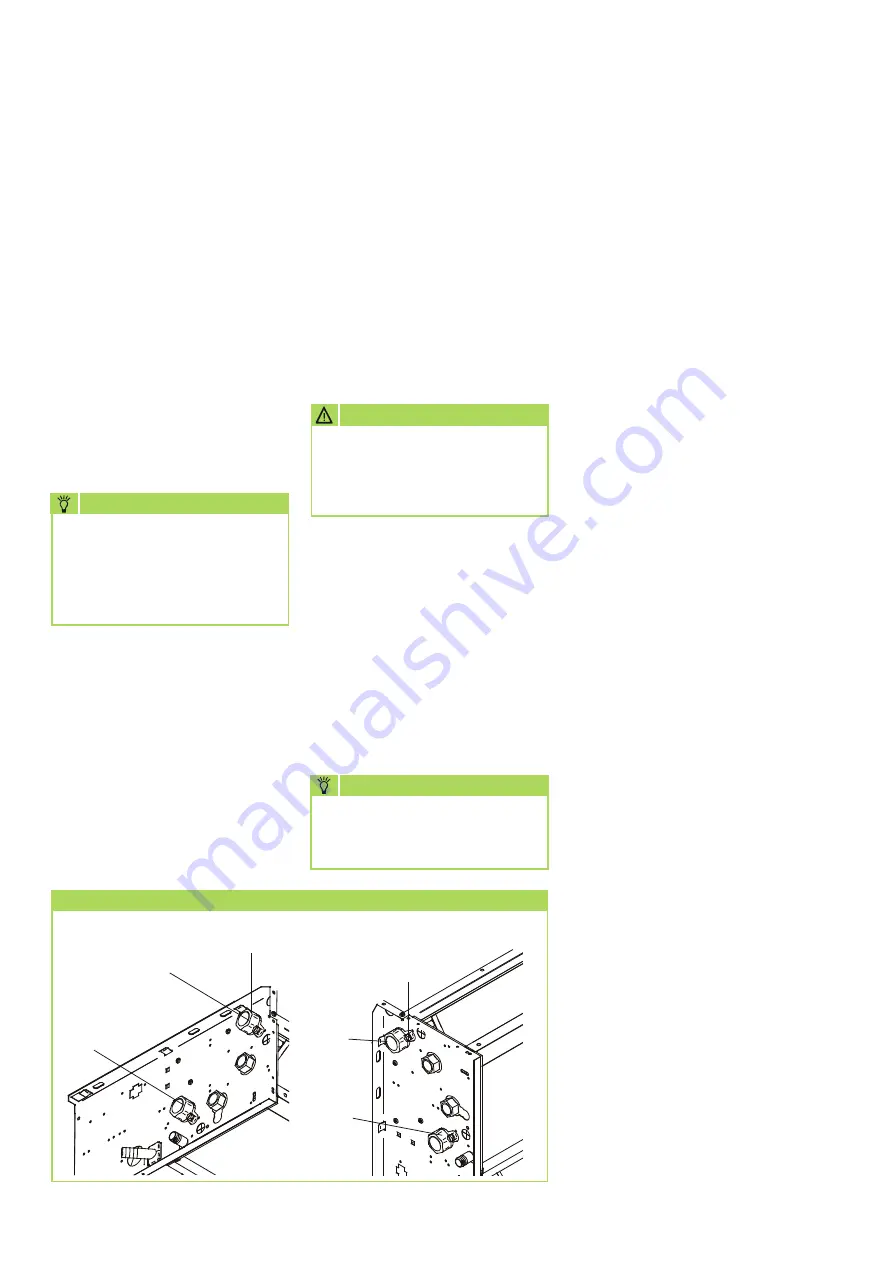
Automatic bleed valves
The unit has one or two manual
bleed valves on the collector pipe
of the register.
The unit can be bled separately
after the system has been filled.
Automatic bleed valves must also
be installed at the highest point
in the collector line.
Glycol tolerant bleeding valves
are necessary when using
media which contain glycol.
CAUTION
Condensate drainage
connection
If the temperature falls below
the dew point, condensate will
form on the cooling fins during
cooling mode.
Below the heat exchanger is
a collection tray which must be
connected to a drain.
■
The condensate drainage
line provided by the customer
should be installed with
an incline of at least 2 %.
If necessary, fit vapour-
diffusion-proof insulation.
■
Route the condensate drainage
line of the unit into the drain
line without any obstruction.
If the condensate runs directly
into a sewer pipe, fit a trap to
prevent any unpleasant odours.
■
When operating the unit at
outside temperatures below
0°C, ensure the condensate
drainage line is laid in such
a manner to protect it against
frost.
If necessary, fit a pipe heater.
■
Following installation, check
that the condensate run off
is unobstructed and ensure that
the line is durably leak tight.
Vertical mounting
The condensate drainage line
can be connected at the funnel
nozzle. The position of the nozzle
can be selected to be on the left
or right. The condensate drainage
connection of the condensate
tray which is not used must
be permanently sealed.
If a valve assembly is used,
the connection must be made
to the additional condensate tray.
Bleeding valve
Outlet
Inlet
Manual
bleeding valve
Outlet
Inlet
Manual
bleeding valve
Anti-freeze protection (accessories)
A water glycol mix is generally
used as the medium for a cold
water system. Depending on
the glycol type and quantity used,
the viscosity changes, the pressure
loss increases and the unit's
cooling or heating output reduces.
All system components must
be approved for use with glycol.
Diaphragm expansion vessel
(MAG)
To avoid pressure fluctuations
because of temperature changes
when not operating, diaphragm
expansion vessels filled with
nitrogen (moisture neutral) must
be integrated in the system.
Safety valve
Safety valves limit excess operating
pressure due to excess warming
or overfilling of the operating
medium. The valve outlet requires
unobstructed draining into a drain
line. Applicable local disposal
ordinances must be observed
if glycol is used.
The product and safety data
sheets of the glycol type which
is used must be obeyed during
use and disposal .
NOTE
No moisture can condense
in the nitrogen filler.
NOTE
REMKO KWK / KWK-ZW
16
















































